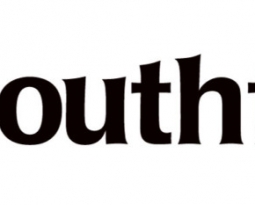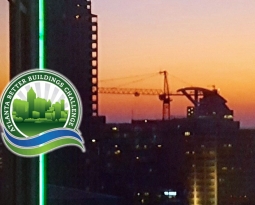8 Days of Sustainability: 5 Easy Energy and Water Tips for Your Home This Winter
**Guest blog by Joe Winslow, Senior Project Manager at Southface**
Atlanta is said to be a city of neighborhoods, where century old bungalows, midcentury ranches, and modern condominium buildings mingle and define the unique look and feel of each community. No matter whether you live in Buckhead or Bankhead, West End or East Atlanta – and no matter the type or age of house – there are steps you can take this winter to reduce your home’s energy and water consumption, save money, and ensure a comfortable and healthy indoor environment.
Here are some easy, low or no cost places to start that don’t require a lot of DIY knowledge or experience.
Start with Drafty Windows and Doors
As windows and doors age they begin to allow cold air into your home as seals dry rot and the wind and weather make the sashes not fit their frames as snuggly. The first step any homeowner should take this winter is to check for drafts around your windows and doors. Begin your inspection by wetting your hand and running it along the seams of your windows and doors feeling for cold air. If you feel cold air, don’t fear! For a temporary fix, seal your windows with clear plastic or install thermal curtains to help absorb and block the circulation of cold air. If there is a leak around the door jam, it can easily be sealed with weather stripping tape from your local hardware store.
For a more permanent fix, enlist a professional to weatherize your home. The Building Performance Institute is a great resource for finding a qualified professional near you. Also be sure to check your local utility’s website for weatherization rebates.
Check for a Leaky Fireplace
Your fireplace can contribute significantly to heat loss in your home during winter. Always make sure the damper is closed when the fireplace isn’t in use. Leaving the flue open is equivalent to leaving a window open all winter. If you rarely use your fireplace, you can more effectively seal your chimney with a temporary device known as a Chimney Balloon that you can pick up for about $50 at your local hardware store.
Make Your Thermostat Work for You
One of most cost effective ways to lower your energy bill in the winter is to adjust how you heat your home with the equipment you already have. Research from the Department of Energy has shown that properly setting and using your programmable thermostat can save about $180 per year.
No matter your thermostat type, here are some principles to live by this winter. At night, lower the temperature a few degrees and cover up with thicker blankets. When you leave your home for extended periods of time, turn the temperature down 10-15 degrees. Ultimately, it’s about finding the right balance between efficiency and comfort for you and your family.
Be Sure to Clear the Air
A sustainable home has minimal impact on the natural environment but is also safe and healthy for the people that live there. Check your furnace filters monthly. Change it if it’s dirty or every three months. Clean filters mean your furnace doesn’t have to work as hard to deliver warm air into your living space and it keeps the air free of unhealthy particulate matter. Also, make sure to get your heating system serviced annually by a qualified HVAC specialist. Keeping your heating, ventilation, and air conditioning systems working properly improves efficiency and the wellbeing of you and your family.
Don’t Forget the Pipes
Pipes that are kept in unheated areas such as crawlspaces and basements are subject to freezing. Insulating pipes and dripping faucets in freezing weather are great prevention methods but, odds are, your pipes will fail eventually. If you do one thing this winter, know where your water shut-off valve is located and have a water key at hand. In the event of a serious leak, knowing the location of your water main shut-off valve could save you money on water and damage repairs. The faster you can turn off the water, the less goes to waste.
On behalf of the Regenerative Places & Spaces Team at Southface, I hope these tips help guide you to a sustainable, healthy, and prosperous new year.
About the Author
Joe Winslow is a Senior Project Manager at Southface where he works with commercial building owners and local governments to realize a regenerative economy driven by responsible resource use, social equity, and a healthy built environment. Joe is a native of coastal North Carolina where he first found his love and appreciation for fragile landscapes and the vulnerable communities that call them home. Joe spent his early career in Washington, DC working with policymakers, businesses, utilities, and private citizens to decarbonize the economy through energy efficiency, smarter resource use, and science-based policy design. He lives in East Atlanta with his partner Mia, an Atlanta native, and their cat Richard.







